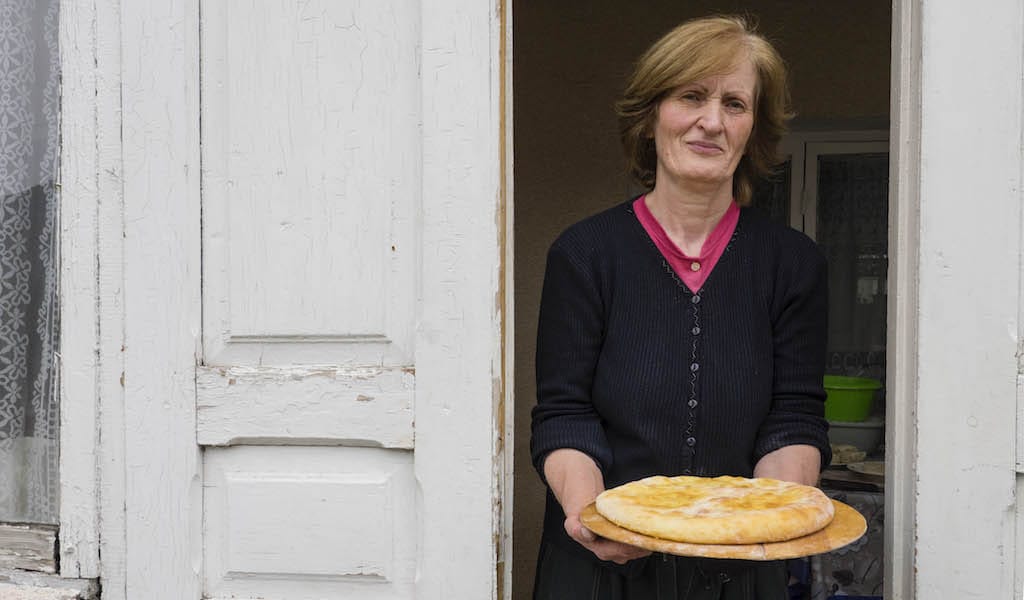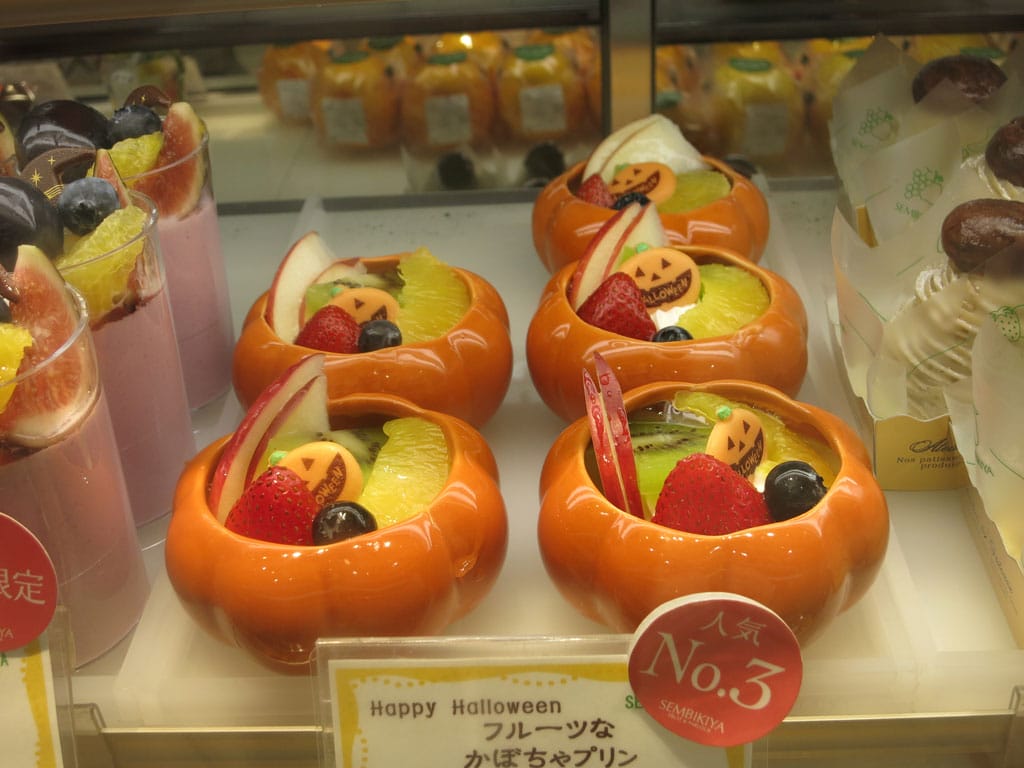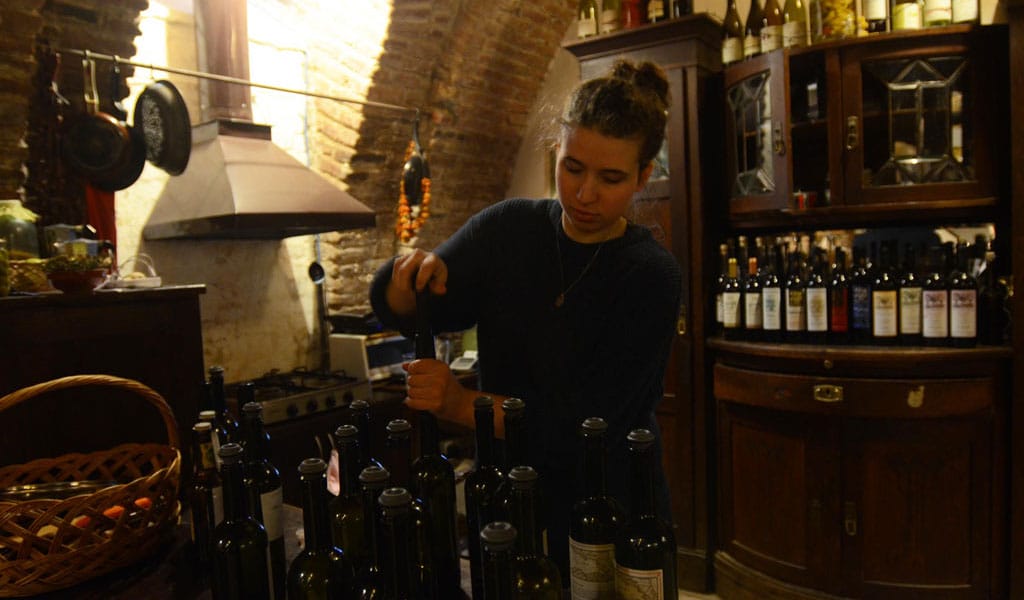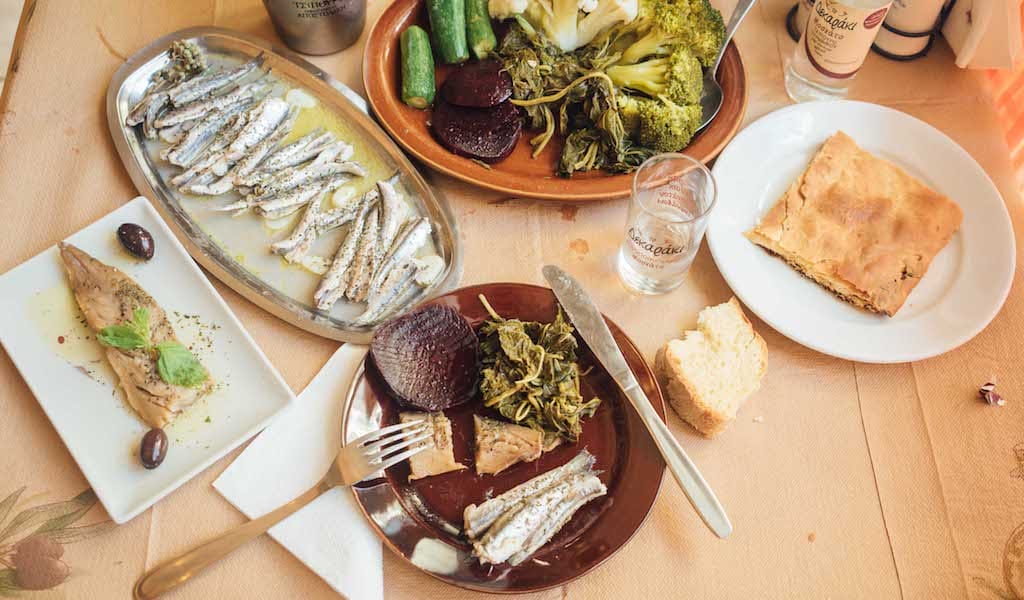The author of 14 books, Carla Capalbo is best known for her food- and wine-centric travelogues exploring the lesser-known regions and culinary traditions of Italy. Her last book, Collio: Fine Wines and Foods from Italy’s Northeast, took readers on a gustatory journey through a tiny region that few outside Italy – or even inside Italy, for that matter – know much about.
Several years ago, Capalbo – who was born in New York, raised in Paris and spent some 20 years living in Italy – became intrigued by Georgia and its cuisine. For her newest book, Tasting Georgia: A Food and Wine Journey in the Caucasus (Interlink Books), Capalbo traversed the country’s culinary backroads, collecting stories and recipes along the way. The result is a richly illustrated book on Georgian regional life and cooking.
 We recently had the chance to meet up with Capalbo and hear more about the work that went into creating Tasting Georgia. She was also kind enough to share her recipe for spicy green pepper paste (mtsvane ajika).
We recently had the chance to meet up with Capalbo and hear more about the work that went into creating Tasting Georgia. She was also kind enough to share her recipe for spicy green pepper paste (mtsvane ajika).
How did this book come about?
The book that I wrote before this one was about a small winemaking region in the northeast of Italy, in Friuli, called Collio. They are these hills that straddle Friuli and Slovenia. One of the people I wrote about is Josko Gravner, a famous winemaker there and the first non-Georgian to choose to make wine in qvevri. This was at least 20 years ago, a long time before anyone was doing this. People thought he was insane. He was ridiculed and treated very badly. In 2008, I saw qvevri at his winery and was moved to tears when I first saw them in his cellar. At that point I vowed that I was going to go to Georgia.
Through a friend, a wine importer in England, I was able to meet a few of the current winemakers in Georgia, among them John Wurdeman from Pheasant’s Tears, who knew my other books, and who invited me about four-and-a-half years ago for a qvevri symposium in Georgia.
Quite simply, on the last day that we came back to Tbilisi I thought I would buy some books to take home. But going into the English-language bookshop in Tbilisi I couldn’t find anything that remotely portrayed the experience I had just had or the country I had seen. I said almost jokingly to John, “You know, I feel a book coming on.” He suggested that he would be happy to help and his team was a big part of the book coming together.
It seemed so sad to me that so few know about Georgia. What you find when you go there is so fabulous, and moving. I felt like there was a purpose to this book. In the back of my mind I was hoping to raise the profile of Georgia through this book.
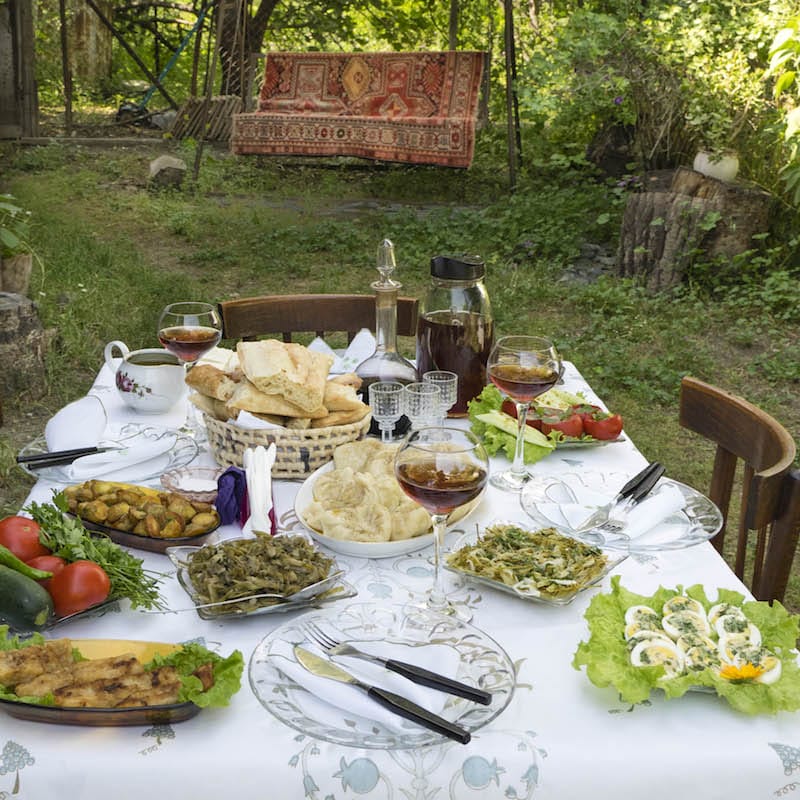
Can you describe the process of creating the book?
The last three books that I did in Italy were actually travel books about food and wine. The idea was to help the reader to discover things that were quite hidden. The process was to move to that region, and to go into the countryside to interview food makers and learn about their culture, but also help visitors understand who they are going to meet when they go there. It meant interviewing anyone who is producing food and wine, from winemakers to beekeepers.
The new book is a food and wine travel guide crossed with a recipe book since I realized that there wasn’t a decent cookbook out there for Georgia that really showed what the food and its makers looked like. I divided the country up into regions, which turned into chapters. Many of the places profiled in the book were impossible to find, so mapping it like this made it a lot easier.
In terms of who I wrote about, in some cases I was steered towards people and in some cases I figured it out on my own, asking around about places to eat and then finding fabulous restaurants and home cooks. Along the way I would collect recipes. One of the problems with many countries is that you get the same ten dishes as you go from restaurant to restaurant but there’s actually a much deeper pool of recipes that change with the terroir. This book tries to show these regional differences, that if you go up into the highlands, you might not get the same thing as you do in the valleys.
 What is it about Georgian food that captured you the way it clearly did?
What is it about Georgian food that captured you the way it clearly did?
For me it was very clear. What struck me immediately was how vibrant the food was from the use of fresh herbs, unlike any other culture I’ve seen. The Georgians will use in one dish what we might think of as one month’s worth of herbs and it doesn’t come off as over the top. They might use two bunches of tarragon in a dish where we might use four leaves. But there are other things: the abundant use of vegetables, the deep culture of fermenting and foraging. These are things that are being rapidly lost in other countries.
There’s also a diversity still there. When it’s the season of fruits, you see heaps of not only wild strawberries, but black and white mulberries, yellow cherries, apples, pears and all kinds of plums. There’s a biodiversity there that we are all struggling to bring back in other places. In that sense, I feel like this is an exciting time to be there. There are people who are actively saving this culture and rediscovering it.
Another thing that’s interesting and why I don’t get bored of Georgian cuisine is that the spices are there but they are very, very delicate. In Middle Eastern food, for example, the use of cumin can sometimes become overbearing to my palate. In Georgian cooking it’s very understated. Many of the spices they use – coriander seeds, fenugreek or marigold – are very subtle. There’s a complexity where certain dishes play off each other. One dish might celebrate the bitterness of greens, while another dish features sour plums, and then there’s the ultimate comfort food that is khachapuri. It’s very indulgent, although always with that sour tang of the cheese when it’s homemade in Georgia. It all keeps your taste buds stimulated.
What I also find exciting is that the wines, especially the amber or macerated whites, are able to accompany that cacophony of flavors in a way that a dry European white could not. There’s a way that food and wine from the same place work together, and that’s very true in Georgia.
 Did you see a struggle in Georgia between the push to modernize and the effort to preserve traditions?
Did you see a struggle in Georgia between the push to modernize and the effort to preserve traditions?
I did see this in many ways. What was interesting is that sometimes it takes an outsider’s eye to show even the locals that things they don’t take seriously are worth maintaining. I saw this in Italy as well. Sometimes they were apologetic about their way of life, but I believe they are maintaining things that we all can learn from.
Look at qvevri. This winemaking tradition, of making wine in giant clay pots buried in the ground, was really in danger of dying out and until recently there was almost no market for it and fewer and fewer families doing it, especially if there was no income. But now there’s more demand and qvevri makers are producing more of them. I think the Georgians themselves have begun to see that these are unique, priceless traditions and they have an almost moral obligation to keep them going, that so much hinges on them. Take away the qvevri and you lose a whole wine tradition. It’s not the same as putting wine in a cement tank or metal barrel. You would lose an 8,000-year-old tradition. These are things that have to go generation to generation or you lose them: They can’t be relearned.
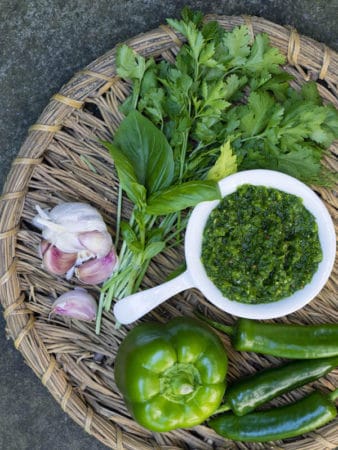 Recipe: Spicy green pepper paste (Mtsvane ajika)
Recipe: Spicy green pepper paste (Mtsvane ajika)
This lovely bright green ajika – like an intense salsa – is best made in summer. It’s very quick and easy. Serve it at a supra table like a relish or add it to marinades for fish or poultry. Stored in a clean, airtight jar in the refrigerator, it will keep for a week or two.
Preparation time: 20 minutes
Makes: 480ml/1 pint/2 cups
200g/7oz/1 green sweet or bell pepper
150g/5oz medium-hot green chile peppers
15g/1/2oz/4 garlic cloves
30g/1oz/1/2 cup fresh coriander/cilantro
20g/2/3oz/1/3 cup parsley
20g/2/3oz/1/3 cup celery leaves
20g/2/3oz/1/3 cup basil leaves
1 tbsp chopped fresh dill
1 tbsp coriander seeds, crushed
1 tbsp ground fenugreek
2 tsp salt
Wearing rubber gloves, remove the stems, seeds and membranes from all the chile peppers. (Save and dry the seeds from the chiles for later use.) Chop roughly.
Place all the ingredients in the bowl of a food processor and process until the mixture resembles a pesto. Transfer to a clean glass jar and store in the refrigerator.
 October 26, 2016 Ask CB
October 26, 2016 Ask CB
Dear Culinary Backstreets,
I just realized I’ll be in Tokyo for Halloween. Are there […] Posted in Tokyo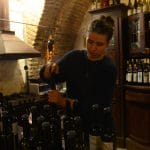 October 12, 2019 Vino Underground
October 12, 2019 Vino Underground
Ènek poured a rosy-colored splash of wine into our glasses, avidly explaining how this […] Posted in Tbilisi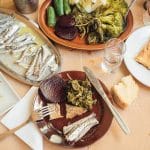 July 6, 2018 Ouzeri Tou Laki
July 6, 2018 Ouzeri Tou Laki
Surely Plateia Viktorias is one of the last places you’d look if you wanted to find a […] Posted in Athens
Published on October 27, 2017
Related stories
October 26, 2016
TokyoDear Culinary Backstreets, I just realized I’ll be in Tokyo for Halloween. Are there any tricks for finding special foodie treats there? Let’s remember that Japan is responsible for inventing cosplay – and that should mean a spectacular Halloween. These days, Tokyo certainly does not disappoint on that holiday, and you’re in for many treats.…
Join our Tbilisi walk to bone up on Georgian wine
October 12, 2019
TbilisiÈnek poured a rosy-colored splash of wine into our glasses, avidly explaining how this particular Aladasturi grape vine was meticulously cultivated in its native west Georgia. In a tasting ritual uncommon in Georgia, we swirled it, sniffed it and savored the flavor as it caressed our tongues. Here in the “cradle of wine,” the land…
July 6, 2018
AthensSurely Plateia Viktorias is one of the last places you’d look if you wanted to find a typical seaside taverna. The square, once a meeting place for Patission Avenue’s haute bourgeoisie in the first half of the 20th century, was filled with refugee tents and sleeping bags just a few years ago. We first noticed…







































